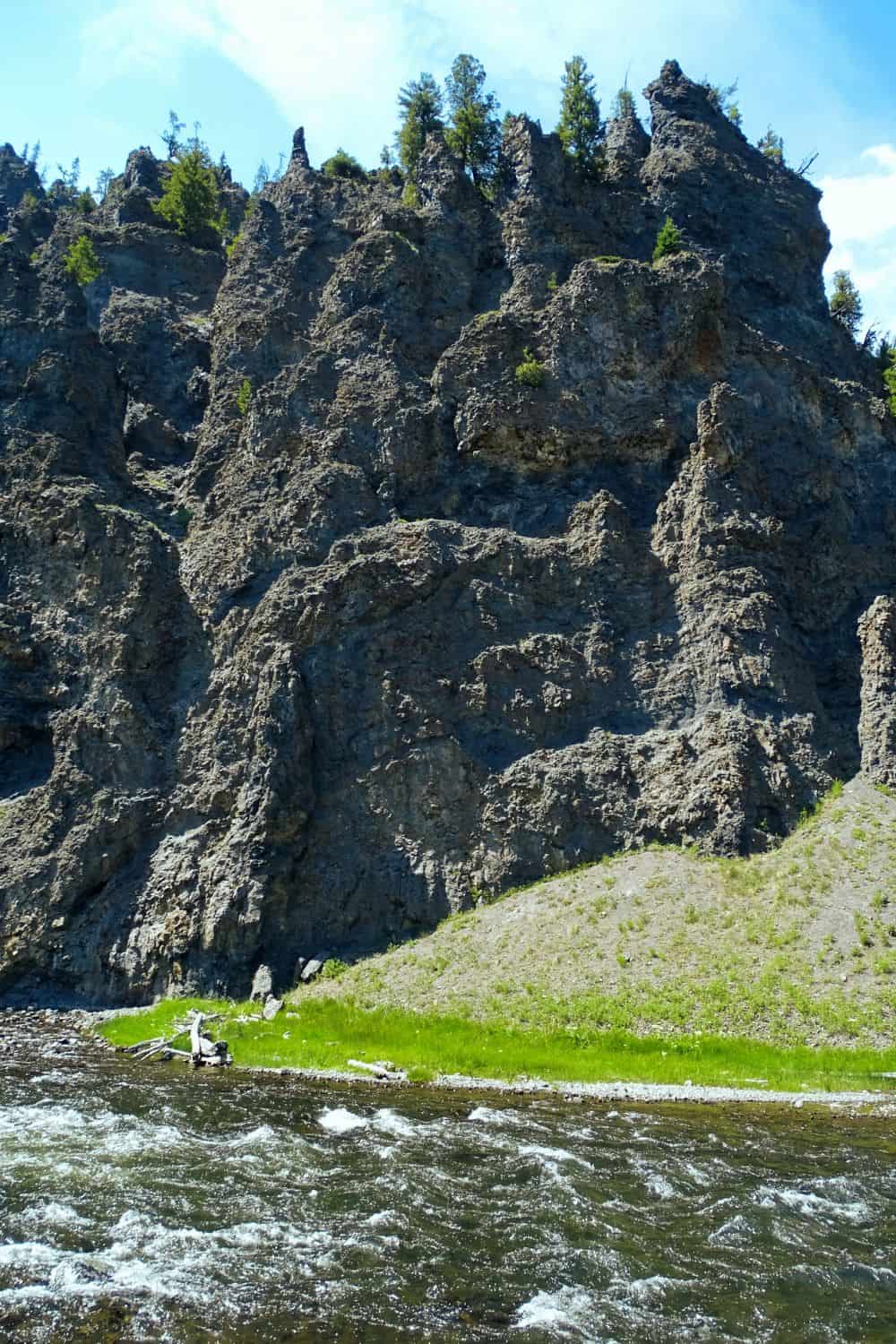
The Yellowstone River is one of the most iconic rivers in the United States, stretching over 692 miles from its headwaters in Wyoming to the Missouri River in Montana. The river flows through Yellowstone National Park, providing a stunning backdrop for the park’s natural wonders, including the Grand Canyon of the Yellowstone and the Lower Falls.
The Yellowstone River is known for its natural beauty, as well as its diverse wildlife and world-class fly fishing opportunities. The river is home to several species of trout, including rainbow, brown, cutthroat, and brook trout, making it a popular destination for anglers from around the world.
The river’s headwaters start in Yellowstone National Park, where the river flows through Yellowstone Lake, the largest high-altitude lake in North America. The lake’s crystal-clear waters are a popular spot for kayaking, canoeing, and paddleboarding, as well as fishing.
As the Yellowstone River leaves the park, it flows through a dramatic canyon known as the Grand Canyon of the Yellowstone. The canyon is over 20 miles long and up to 1,200 feet deep, with stunning rock formations and waterfalls.
The most famous of these waterfalls is the Lower Falls, which drops over 300 feet into the canyon below. The falls are easily accessible via a paved trail and offer stunning views of the canyon and river below.
The Yellowstone River also played an important role in the history of the American West. The river was a vital transportation route for Native American tribes, fur traders, and pioneers, and served as the inspiration for many famous explorers and writers, including John Colter and Jack London.
Today, the river remains an important resource for the communities and wildlife that call it home. In addition to its recreational opportunities, the river provides drinking water, irrigation, and hydropower to the surrounding areas.
However, the Yellowstone River is not without its challenges. In recent years, the river has faced threats from pollution, climate change, and overuse. In 2016, a major fish kill occurred in the river, likely caused by a combination of low water levels, high temperatures, and the presence of a parasitic organism.
To protect the Yellowstone River and its resources, conservation efforts have been implemented to reduce pollution and ensure sustainable water use. The river is also closely monitored for signs of ecological stress and measures are taken to mitigate any negative impacts.
Despite its challenges, the Yellowstone River remains a treasured natural resource and a symbol of the American West. Its stunning beauty, diverse wildlife, and world-class fishing opportunities continue to draw visitors from around the world.
The Yellowstone River is a true treasure of the American West, offering breathtaking scenery, world-class fishing, and a rich history. While facing challenges, efforts to protect and conserve this iconic river continue to ensure its vitality for future generations to enjoy.
Here are some safety tips to keep in mind when visiting Yellowstone National Park:
- Follow park rules and regulations: It is important to follow park rules and regulations to ensure the safety of visitors and the protection of the park’s natural and cultural resources.
- Stay on designated trails: Staying on designated trails can help prevent accidents and protect the fragile ecosystem of the park.
- Keep a safe distance from wildlife: Yellowstone is home to a variety of wildlife, including bison, elk, bears, and wolves. Visitors should keep a safe distance and never approach or feed any wild animals.
- Carry bear spray: Bear attacks are rare, but it is important to carry bear spray and know how to use it in case of an encounter.
- Be prepared for changing weather conditions: The weather in Yellowstone can be unpredictable, so it is important to be prepared for changing conditions. Bring layers, sunscreen, and a hat to protect against the sun, and rain gear in case of sudden storms.
- Respect thermal features: Yellowstone is home to many geothermal features, including hot springs, geysers, and mud pots. Visitors should stay on designated boardwalks and never enter or touch the thermal features.
- Drive safely: Yellowstone has many narrow and winding roads, and wildlife can often be found crossing the road. Visitors should drive slowly and stay alert at all times.
- Plan ahead: Visitors should plan ahead and research the park before arriving, including checking weather conditions, trail conditions, and any park alerts or closures.
By following these safety tips, visitors can help ensure a safe and enjoyable visit to Yellowstone National Park.
Related posts:
Yellowstone National Park is home to a large population of bears, including grizzly bears and black bears. While these animals are a highlight of many visitors’ trips to the park, encountering a bear can be dangerous if not handled co...
When planning your Yellowstone camping trip, make sure to check the weather forecast and pack appropriate clothes. You don't want to spend your vacation driving across the country only to find that you need to buy winter gear to stay warm! It's best ...
Yellowstone National Park is known for its geysers, which are some of the most famous geysers in the world. The park has over 10,000 geothermal features, including hot springs, mud pots, and fumaroles, but it's the geysers that draw the mos...
Yellowstone National Park is a natural wonderland located in the northwestern United States, stretching across Wyoming, Montana, and Idaho. One of the most famous attractions in the park is Old Faithful, a geyser that has been eruptin...
Yellowstone National Park is a world-renowned national park in the United States, famous for its natural beauty, wildlife, and unique geothermal features. One of the most iconic animals that roam the park is the American Bison, commonly kno...
Camping in Yellowstone, Montana is a popular activity for outdoor enthusiasts of all ages. Every year, thousands of visitors from around the globe travel to Yellowstone National Park hoping to have a memorable trip filled with scenic beauty, wildlife...